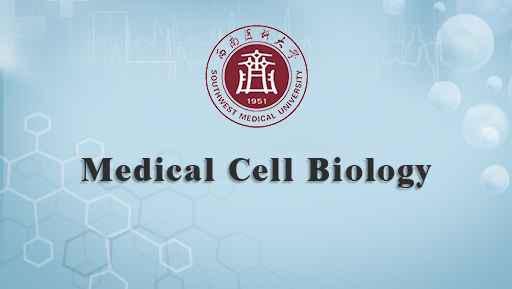Medical Cell Biology is the course about investigating human cell structures, functions, the rules of biochemical action, and disease relative abnormality that based on cell biology and molecular cell biology. It is one of the core courses in life science as well as a required basic course of modern medical science. Medical Cell Biology is a basic subject of bioscience that focus on the conceptions involving the ultrastructures, chemical composition and function of organelles in cell, basic life activities of cells, the mechanisms of biochemical action and the research methods as well. The fields of study include morphogenesis and function, division and differentiation, senescence and death, genetics and variation etc. During the medical education, Medical Cell Biology has connected tightly with basic subjects include Biochemistry, Histology, Embryology, Pathology and also provide basic and relative knowledge for the subjects of period candidacy includes Medical Genetics, Physiology and Immunology too.
The objectives of these course is (1)make the students comprehend the basic knowledge of cell biology; (2)be well known the research methods and the advancement in medical cell biology; (3)master the use of microscope, micro-measurement and cell counting; (4)make the self-study competence and the diathesis of scientific research of students get significant improvement.
医学细胞生物学是以细胞生物学和分子生物学为基础,探讨人体细胞结构、功能及生命活动规律、细胞异常改变与疾病关系的学科。医学细胞生物学是一门生命科学的核心课程之一,是现代医学教育的必修专业基础课。医学细胞生物学重点讲授有关的基本概念;细胞内各种结构;细胞器的亚显微结构、化学组成和功能作用;细胞的基本生命活动,介绍重要生化活动的分子机制及本学科的主要研究方法。研究范围包括:细胞的形态结构和功能、分裂和分化、衰老和死亡、遗传和变异等。在医学教育中,医学细胞生物学与生物化学、组织学、胚胎学、病理学等基础课程有着密切联系,并为医学遗传学、生理学、免疫学等后续专业课程提供基础理论和相关知识。
本门课程的教学目的是使学生掌握人体细胞基本的结构、功能和生化活动的基本规律与分子机制,了解本学科的主要研究方法和最新的进展;掌握显微镜使用、显微测量和细胞计数等基本技能;培养学生自学能力和基本的科学思维能力。
1.1 Introduction to Cells
1.2 Prokaryotic cell and Eukaryotic cell
1.3 Molecular basis of cell
2. membrane structure and function
2.1 Membrane structure and dynamics
2.1.1 Phospholipid
2.1.2 Fluid mosaic model
2.1.3 Fluidity of cell membrane
2.2 Transmembrane transport
3.Endomembrane system
3.1 ER
3.1.1 Signal Hypothesis 1
3.1.2 Signal Hypothesis 2
3.2 Golgi Complex
3.2.1 The morphological structure of Golgi complex
3.2.2 Formation of lysosome
4.mitochondria
4.1 Semi-autonomy
4.1.1 Hereditary character of mtDNA
4.1.2 Transmembrane transport and location of mitochondrial proteins
5. Cytoskeleton
5.1 Microtubule
5.1.1 cytoskeleton-the cilia(1)
5.1.2 cytoskeleton-the cilia(2)
5.1.3 cytoskeleton-the cilia(3)
5.1.4 mirotubule morphology and chemical composition
5.1.5 mirotubule assembly
5.2 Microfilament
5.2.1 Morphology and chemical composition
5.2.2 Microfilament assembly
5.2.3 The main function of microfilaments
5.2.4 Microfilament and muscle contraction
6. Nucleus
6.1 Chromatin and Chromosomes
6.1.1 The chemical composition of chromatin and chromosome
6.1.2 Multistage helical structure model and loop structure model of chromosome
7. cell proliferation
7.1 Cell cycle
7.1.1 The basic concept of cell cycle
7.1.2 Mitosis-1
7.1.3 Mitosis-2
8. Cell Senescence and cell death
8.1 Cell Senescence
8.1.1 The concept and characteristic of cell aging
8.1.2 Longevity gene theory
8.1.3 Hayflick limit and telomere shortening theory
8.1.4 progresses in cell senescence
9.stem cell
9.1 Overview of stem cell
9.1.1 The concept and properties of stem cells
9.1.2 classification of stem cells
9.2 Different types of stem cell
9.2.1 iPS cell
9.2.2 application of iPS cell


